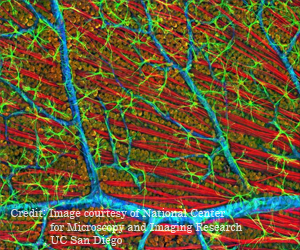Using gene therapy which reprograms cells in the eye to become light sensitive can help restore vision in retinitis pigmentosa.
Highlights
- Blindness can be reversed with gene therapy which reprograms cells in the eye to be light sensitive.
- The process involves a viral vector which expresses a light-sensitive protein, melanopsin, in the residual retinal cells.
- The method can be used as a treatment for retinitis pigmentosa, a progressive loss of photoreceptor cells that causes blindness.
TOP INSIGHT
Activating a protein in the retinal cells improved response to light and sent visual signals to the brain which helps preserve the photoreceptor cells and reverse blindness.
Gene Therapy To Activate Light-Sensitive Protein
A viral vector was used to express a light-sensitive protein, melanopsin, in the residual retinal cells in mice which were blind from retinitis pigmentosa.
For over a year, the mice were monitored and they maintained vision during this time. They were able to recognise objects in their environment which indicated a high level of visual perception. The cells expressing melanopsin were able to respond to light and send visual signals to the brain.
Samantha de Silva, the lead author of the study said, ’There are many blind patients in our clinics and the ability to give them some sight back with a relatively simple genetic procedure is very exciting. Our next step will be to start a clinical trial to assess this in patients.’
RP is an inherited degenerative disorder which affects the retina’s ability to respond to light. It results in progressive loss of vision, eventually leading to blindness. It involves both eyes.
Retina, alight-sensitive area is made up of photo-receptor cells. These cells perform the function of detecting colorand light intensity. These are of two types – rods and cones. Rods lie on the periphery of the retina and support black and white vision. They focus on distant vision and dim light. Cones are centrally located in the retina and support colored vision and near-sighted vision.
In RP, these cells get degenerated and stop working leading to loss of vision. Disease starts with death or necrosis of rods; eventually cones are affected leading to total blindness. Side vision is impacted, the most owing to the rods, which makes it hard to see in dim light. Early intervention helps retain the cones so that near-sighted vision to a large extent can be preserved.
Symptoms of RP
- Begins with difficulty seeing in dim light - like at night or dusk. This is also known as night blindness.
- Loss of side vision, wherein the individual will not be able to see things on the side, above or below.
- As the disease progresses, visual clarity and visual acuity decrease. By the time the person is in the 50s, near-sighted vision also becomes difficult.
- People with retinitis pigmentosa find it difficult to go out in bright sunny light.
Gene therapy using CRISPR can help edit the mutated genes. Deactivating either Nrl or Nr2e3 helped to reprogram the mutated rod cells to functioning cone cells, which helped reverse degeneration and restored vision.
Reference
- Samantha R. De Silvaa, Alun R. Barnarda, Steven Hughesa, Shu K. E. Tama, Chris Martinb, Mandeep S. Singha, Alona O. Barnea-Cramera, Michelle E. McClementsa, Matthew J. Duringc, Stuart N. Peirsona, Mark W. Hankinsa,1, and Robert E. MacLaren. ’Long-term restoration of visual function in end-stage retinal degeneration using subretinal human melanopsin gene therapy’, Proceedings of the National Academy of Sciences (2017), http://dx.doi.org/10.1073/pnas.1701589114.
Source-Medindia
 MEDINDIA
MEDINDIA





 Email
Email








